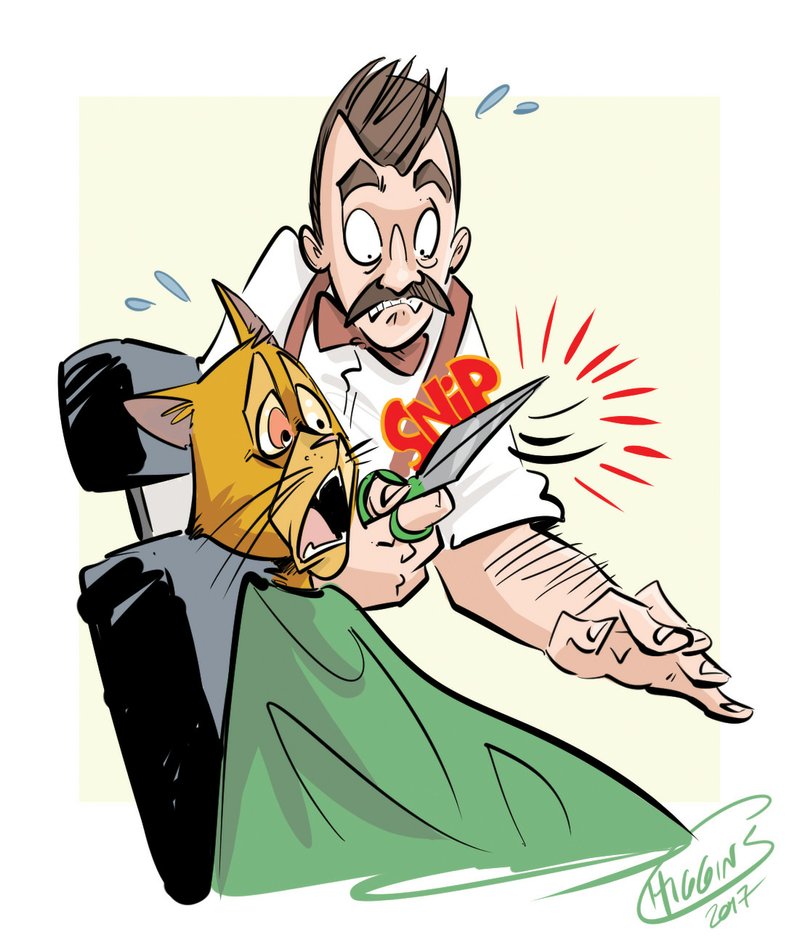I was trimming matted hair on my cat's neck and accidentally cut off a couple of whiskers. Will they grow back? I feel awful about it even though it didn't seem to hurt him.
Cutting the whiskers likely didn't cause pain, although your cat may feel strange and disoriented without his complete complement of facial sensory tools, according to petmd.com. Take heart, also, in knowing that the whiskers should regrow within two or three months.
Whiskers, like hair, grow continually and eventually may even be shed. In fact, you may someday find a stray whisker lying on your floor, the sofa or in the kitty bed.
But just because whiskers grow and are shed, it's a mistake to compare them to a cat's regular hairs, according to the American Society for the Prevention of Cruelty to Animal's Complete Guide to Cats: Everything You Need to Know About Choosing and Caring for Your Pet.
Whiskers are thicker and longer than regular hair, plus they have follicles that are three times deeper than ordinary hair follicles. At the base of each follicle is a bundle of nerve endings that heighten the whiskers' tactile sensitivity.
There are typically about 12 whiskers -- known as vibrissae or tactile hairs -- near the nose on the upper lips, but there also are smaller ones above the eyes, on the cheeks and even on a cat's hind legs. Vibrissae are connected to the cat's muscular and nervous systems, which receive signals from proprioceptors at the end of each whisker.
Whiskers function as sort of a feline radar system, giving a cat the ability to detect even the slightest movement in the air around him. In fact, whiskers are one reason a cat is able to notice obstacles even in the dark.
"Whiskers do grow back, but cats need their whiskers to remain intact in the same way you and I need our touch senses to get around," according to petmd.com. The website likens the cat's sensory perception through whiskers to that of human fingertips.
The whiskers' proprioceptors allow a cat to spatially orient himself and actually "feel" his location from the information they give him.
"You may notice your cat's whiskers are the width of your cat," veterinarian Justine Lee says in It's a Cat's World ... You Just Live in It: Everything You Ever Wanted to Know About Your Furry Feline. The whiskers' length "evolutionarily allows your cat to fit through tight spaces and sense how much personal space he has around him. Please don't cut those whiskers off -- they are actually quite important to let him know how much room he has to wriggle."
Lee also notes that cutting the facial whiskers doesn't cause pain, but that pulling them out will do so: "Ever accidentally yank out your nose hair? Ouch!"
While whiskers provide the cat with necessary sensory information, for the pet's owner they're indicators of the way a cat feels, according to an article at Catster.com. If the whiskers are relaxed and sticking straight out sideways, a cat feels calm and relaxed. When a cat is excited and alert, the whiskers point forward. Whiskers lying flat against the cheeks can mean the cat is angry or frightened. Note, however, that these signals need to be read along with other body language such as ear and tail position to get an accurate reading of a cat's mood.
Most whiskers are white, but some cats may sport one or more black ones. Because whisker follicles lie in bundles of nerve and blood vessels, they don't usually access melanin, which is the substance that provides a cat's hair with color. If whiskers do tap into pigment, they lose color before they pop through the skin's outer layer.
Family on 06/14/2017
